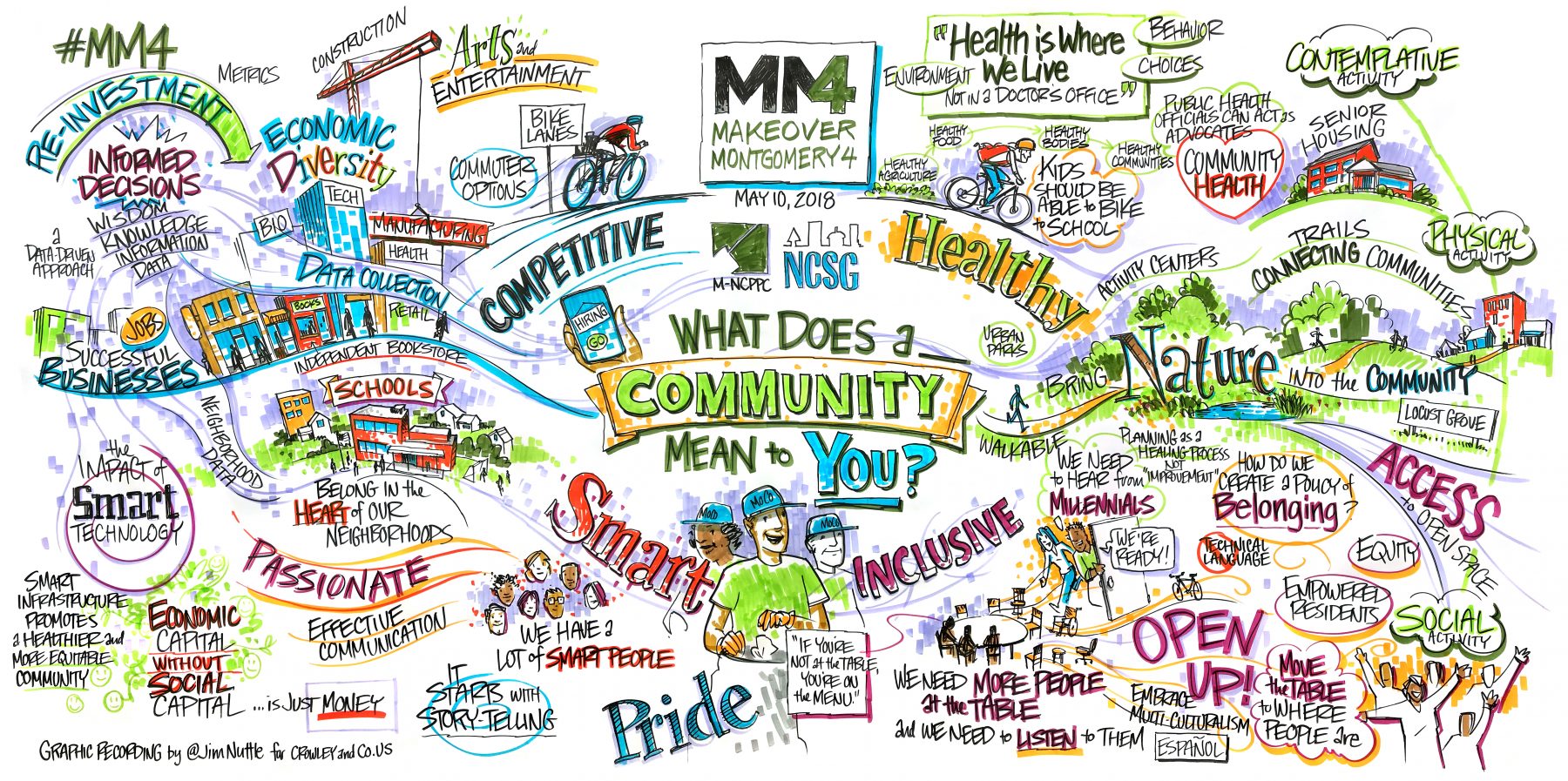
Held May 9-11, regional event drew hundreds of attendees to sessions on cutting-edge technologies, affordable housing, healthy community design, driverless cars, public art and more
SILVER SPRING, MD – The Montgomery County Planning Department, part of The Maryland-National Capital Park and Planning Commission, drew about 280 people to its Makeover Montgomery 4 Conference sessions at the Silver Spring Civic Building on May 10 and May 11. The conference kicked off on May 9 at the University of Maryland with keynote speaker Peter Leyden, a technology expert who discussed influential trends shaping our society.
“This year’s conference addressed a broader range of topics related to transforming the suburbs into more welcoming, healthier places,” says Planning Director Gwen Wright. “Expanding the focus of the sessions makes sense, given the increasingly diverse population of the county and the many challenges we face in planning livable communities for the future.”
The conference was attended by planners, design professionals, community activists, health experts and others who presented case studies and lessons learned from projects across the region. An artist captured the major ideas from the conference in a drawing combining contributions from attendees. View the time lapse video of the creation of the drawing.
“Makeover Montgomery has grown into a regional event and an important exchange of ideas among experts, academics and residents,” says Gerrit Knaap, executive director of the National Center for Smart Growth, which co-sponsored the conference. “It generated much discussion about ways of providing affordable housing, transit, infrastructure, healthy community design and much, much more.”
Takeaways from the sessions include the following:
- Keynote speaker Peter Leyden reminded planners to “learn from the past as we envision the future,” since communities evolve slowly.
- Leyden urged the audience to “understand the millennial generation as we plan” because young residents will inherit our visions.
- Plenary session speaker Roger Lewis, an architect and journalist, noted that “traditional media outlets are shrinking, so planners and design professionals have to explore new channels and communication tools to get out their messages.”
- “Health is where we live, not in the doctor’s office,” says Richard Jackson of the School of Public Health at the University of California, Los Angeles, who was quoted by a speaker during a session on the health of underserved communities.
- “Begin your planning outreach with storytelling to validate who your audience members are and what they bring to the table; this is a good way to humanize the planning process,” said James Rojas, a planner and community activist, during a session on public engagement.
- “An analysis of crashes throughout the County shows us that safety issues are very much a reflection of land use. What works in the cities that have adopted Vision Zero may be appropriate in our major urban areas such as Bethesda, Silver Spring and Wheaton, but other approaches may be needed along suburban corridors such as Veirs Mill Road and in our rural areas,” said David Anspacher at the Vision Zero presentation on the smart communities’ track.
- “Health organizations make good planning partners because they are trusted, skilled at outreach and coalition-building, able to leverage funding sources and rely on data-driven research,” said Wendy Phelps of Toole Design Group in a presentation about health and infrastructure.
- “National and regional demographics are changing but the housing market is not adjusting to these changes,” said a presenter during an affordable housing session.
- “The only fix to the affordable housing crisis is to increase the supply of housing,” said Washington, D.C. developer Martin Ditto in a session about missing middle housing.
- “What’s needed in our parks are more sitting areas for adults and seniors, connecting historical features across the park system and promoting the features in our parks that are under-marketed,” said a Montgomery County park planner about a recent county study.
- “Placemaking is about the culture of belonging, being part of something bigger than ourselves,” noted an architect during a session about improving health-challenged communities.
- Four lessons emerged from a session on the 30-year process of planning the Purple Line: democracy still works, it pays to think big, don’t make preemptive concessions at the beginning of the process and play the long game – don’t give up!
Makeover Montgomery 4 was organized through a partnership between the Montgomery County Planning Department and the National Center for Smart Growth at the University of Maryland. The 2018 event followed similar conferences in 2016, 2014 and 2011 organized by the Montgomery County Planning Department and the National Center for Smart Growth.
View the recap video from the 2018 Makeover Montgomery 4 event.
Please visit www.makeovermontgomery4.com for more information.